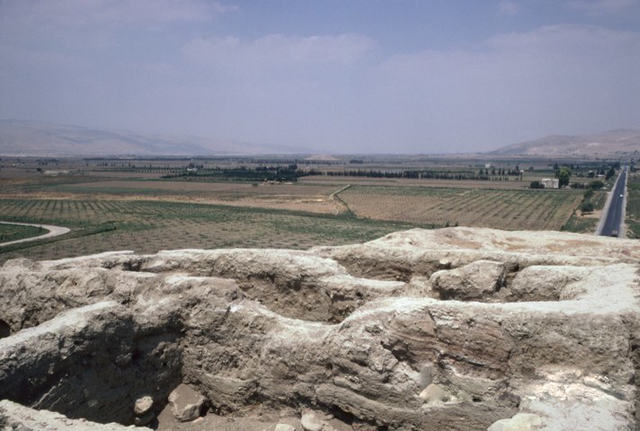AMMAN — professor Zeidan Kafafi studied rural societies and their life in the Ghor Abu ‘Obeideh region during the Iron I and II, and this system collapsed by the end of the Iron Age.
This change of socio-economy has been well remarked at major sites in the region such as Tell Mazar, Tell Deir ‘Alla and Tell Damiyah. At those and other contemporaneous Iron Age sites, also during the Persian/Hellenistic period, people used only the summits of the tells for storage purposes and stocking their animals, Kafafi said.
He added: "This means that throughout the Iron Age the Central Jordan Valley was densely populated by settled people and mobile groups by the same time. As a matter of fact, the inhabitants of the Jordan Valley practiced during the period ranging from about 1,200 to 539 BC different economic practices such as cultivation mainly, pastoralism, trade and industry."
“These economic activities have been changed from time to time during the Iron Age but it does not mean that the economic status of whole society shifted dramatically from urban to nomadic,” Kafafi said.
He noted that it might be assumed, that only part of the societies were settlers, in the meantime others were transhumance, in other words semi-nomads.
For example, it has been assumed by the first excavators of the site of Tell Deir ‘Alla that the settlers of the site were semi-nomads during the beginning of the Iron Age I (ca. 1,150 BC).
The results of the last excavations approved that this assumption has to be reconsidered due to the discovery of architectural and other archaeological material found at the site and dated to the end of the Late Bronze Age and the beginning of the Iron Age (ca. 1,300-1,100 BC).
"As it has above mentioned, the people lived at Ghor Abu ‘Obeideh practiced several economic practices such as cultivation, mainly, pastoralism, trade and industry. These activities might be explained as human behaviours which reflect the type of life-style," Kafafi underlined.
The professor noted that the research is based above all on studying the archaeological data obtained from the excavations conducted at several sites in Ghor Abu ‘Obeideh.
The results of the excavations conducted at the site of Tell Deir ‘Alla in connection with other sites are the key of our information in explaining the way of life that the inhabitants of Ghor Abu ‘Obeideh used to live during the ancient times, he said.
Tell Deir ‘Alla stands on the floor of the long north-south Rift Valley, Kafafi elaborated, adding that in the valley floor is in general 4-5 km wide, i.e. extending from the Jordan River bed (Zor) to the slopes of the eastern mountains.
This surrounding landscape has good agricultural soil in most places, but generally limited, rainfall (average 260 mm per year at the site) can be supplemented with irrigation water, supplied from the Zarqa River.
"The Jordan Valley is very suitable for winter grazing, largely because of its mild temperature during that season. The results of the excavations have shown that the site was continuously occupied from the latest phase of the Middle Bronze Age until the end of the Persian period [ca. from the sixteenth to the fourth centuries BC]."
"The tell was re-occupied by a cemetery dated to the Ayyubid/Mamluk period [ca. 12th-16th century AD]," Kafafi underscored.
The professor pointed out that based on archaeological material excavated at the site it is very obvious that Tell Deir ‘Alla served as a town with a large temple with auxiliary building-storerooms, workshops and dwellings during the Late Bronze and Iron Ages and continued to be occupied till the end of the 4th century BC.
The Late Bronze and Iron Ages temple, constructed in 13th-12th centuries BC were destroyed by the earthquake. There are also traces of fire that indicate that a blaze followed after the quake.
Kafafi continued that after the destruction of Late Bronze Age buildings, it seems that the inhabitants lived in tents, for some time. This conclusion is supported by excavated post-holes in levels located over the Late Bronze Age ones.
This means that the site might have been used only for certain times during the year, and the dwellers practiced animal husbandry and probably some farming. It seems to the excavators at the site that, while the inhabitants started to rebuild their houses, a fire broke out again, he added.
"Almost immediately after that the site was occupied by bronze-smiths who used it for industrial purposes. Three furnaces built consecutively on top each other were excavated. But it is still unknown who these smiths were," Kafafi speculated.
He added that from the end of the 12th to the end of the 11th century BC, the settlement showed a different character: Several buildings and alley-ways were constructed, but there is no clear evidence of any town wall at this stage.
"However, there seems to have been a flimsy defence wall and gate between two round towers, probably to be dated to the 10th century BC," the professor said.
